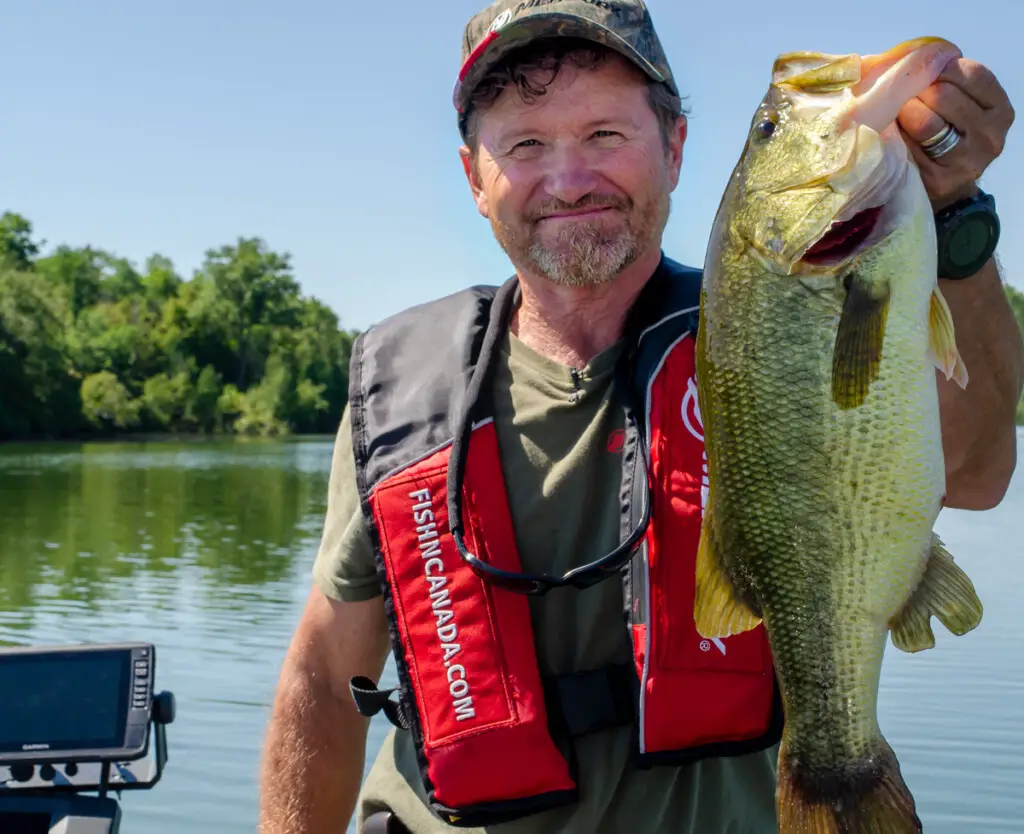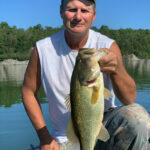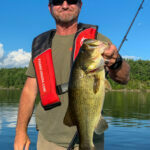During this crazy summer of 2020, I had a rare chance to get together with my long-time fishing buddy, tournament fishing partner, public and high school pal and, of course, frequent beer-drinking cohort, Mike Burriss. This was our second get-together for the year (the first was a Smallmouth Bass slaying we did on Lake Ontario), and I’m hoping it won’t be the last. I say rare, by the way, because by the time bass season is in full swing, we are both typically too busy to coordinate a Largemouth trip like this.
Mike’s Getaway Oasis
Mikey has been after me to join him up at his place on Cranberry Lake just north of Kingston, Ontario, near Seeley’s Bay. His stories of mega-sacks of Largemouth Bass have had me drooling whenever his texts and, of course, photos roll in. Well, I finally got to give this intricate lake system a shot.
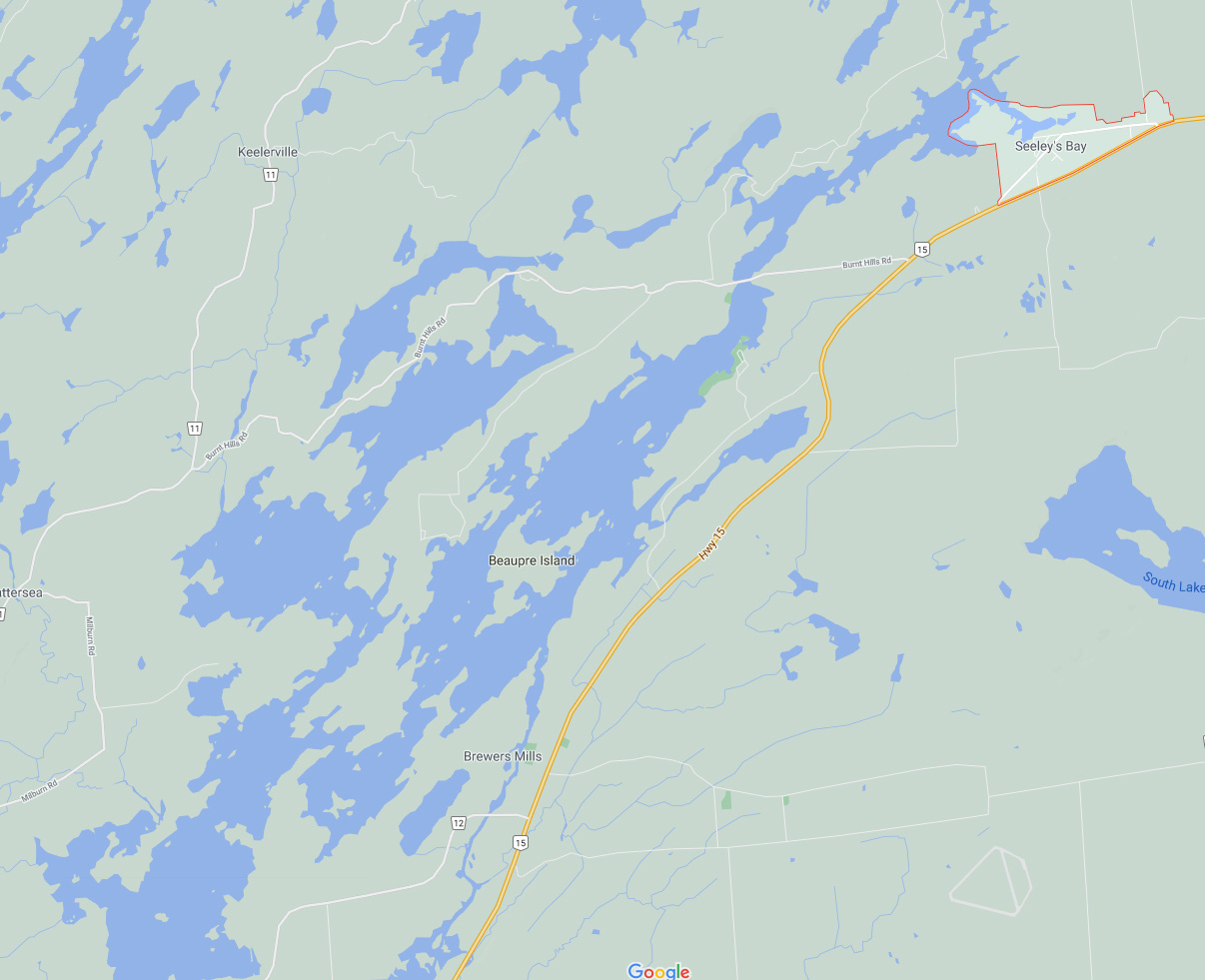
The System of Lakes
I call it intricate because I had no idea there were so many kilometres of water in the Cranberry Lake system. I thought it was simply Cranberry and Dog Lakes. Well, I discovered that I needed to add in Little Cranberry, Whitefish, and Cranesnest Lake at the extreme upper end of the chain (I’m not sure if one can access it from Dog Lake, but there is a small bridge there). Of course, all these lakes are joined by winding channels that look very much like rivers. There is a mind-boggling amount of water there.
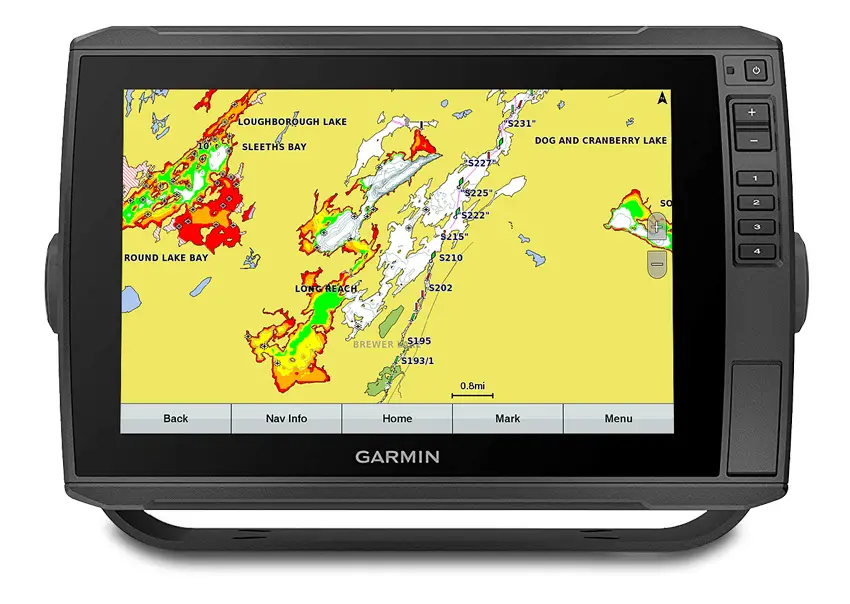
Another thing I didn’t realize about these joined lakes is the difference in water clarity. Mike has always told me about his area of the lake, which is Cranberry, having little visibility (a Eutrophic Lake). However, we had never really talked about the rest of the water.
Whitefish Lake
Our first trip would be up to Whitefish Lake, accessed via a canal. Whitefish is pretty much what one would expect for a southeastern Ontario lake… gorgeous.
Mike told me this would be the cleanest water we would be fishing for the next couple of days. Once we arrived at Whitefish, Mike headed to some waypoints and, with about 75% confidence, said, “We should be able to get some fish here.” The reason he didn’t have complete confidence was partially due to the nasty rainstorm we drove through while towing his rig through the Kingston area on the way to the lake. Something else affecting his confidence was the time of year—this wasn’t exactly perfect timing.
She was a wee bit wet on the way north.
Armed with flipping sticks and either heavy mono, heavy fluoro, or a combination of heavy braid to a heavy fluoro leader, we started dunking soft plastics into lush weedbeds. While trying to come up with a small variety of the best bass lures to use, Mike dropped mostly worm-shaped plastics while I took a heavy weight and dunked a Texas rig Beaver bait on a straight shanked flipping hook. We were instantly into a nice bunch of Largemouth in what I found to be “normal” water clarity (5’ visibility— give or take).
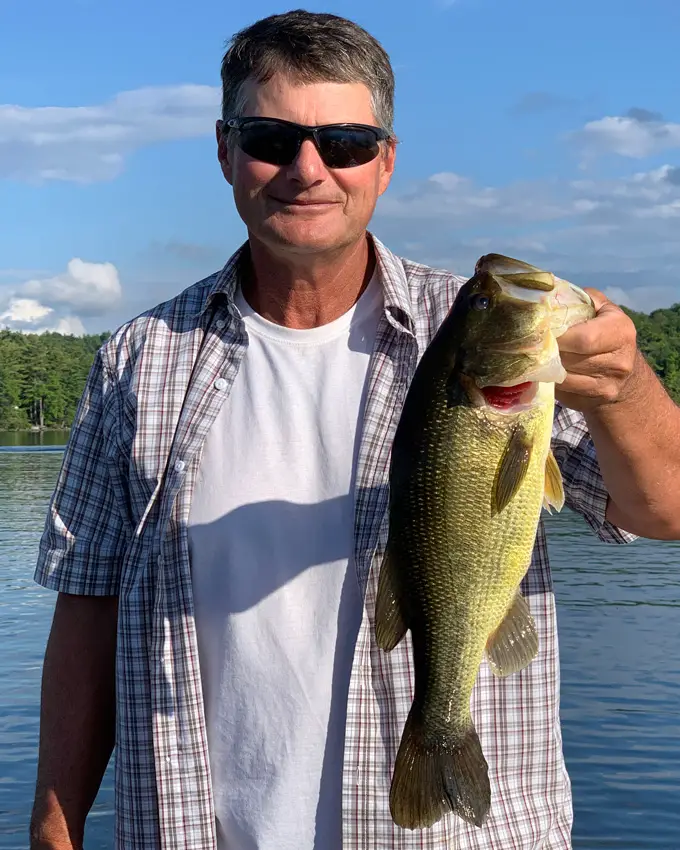
Finally, the receding daylight forced us to pack it in.
Cranberry and Dog
The next morning, we were all pumped up to hit some of Mikey’s waypoints on “the Big Two” lakes—Cranberry Lake and Dog Lake. We had to wait for a swing bridge to start its morning operation for water vehicles. They don’t turn the big gearwheel until 9 am. On any other fishing day, Mike and I would already be 2-3 hours in by that time.
On the plus side, the unexpected delay made for a nice leisurely pace to enjoy a morning coffee and tie up a few more rigs for the upcoming day.
Once through the pearly gates and to our first spot, wow, what a difference in water clarity. It almost looked like an algae bloom. Mike assured me it is normal there and happens every year. The only thing that is not a constant is how far this green water creeps through the system. This year was a strong creeper.
We did the exact fishing tactics as we did on Whitefish, but my confidence was waning. What little remaining confidence I had was only because I trusted Mike, his fishing ability, and his past stories. I must say, I much prefer clear water. It doesn’t have to be gin-clear; it just has to make me feel that the fish can see my bait.
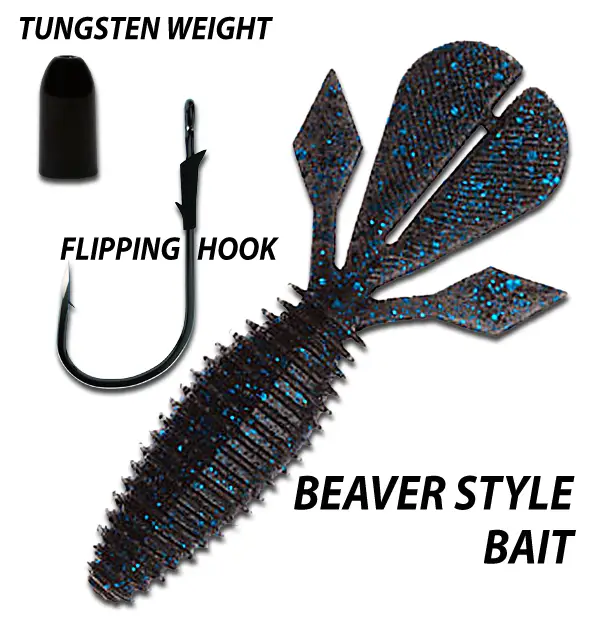
My Newfound Confidence
Well, my fishing friends, it didn’t take Mike long to step into one on a tip-toe hookset (I love watching this guy drill Largemouth). Then another, then another. Holy s—, these fish can actually see down there… awesome!
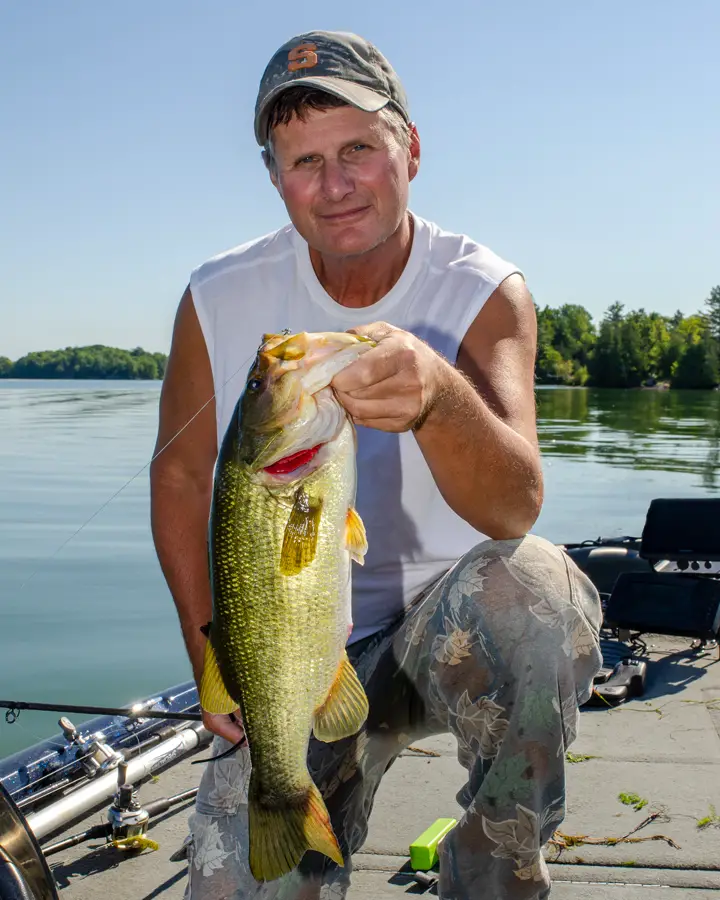
After a bit of fine-tuning, I too was power housing hooksets into these green beasts from their green environment.
This is a huge stepping stone for me and most certainly knocks the barriers off my negative “dirty water” mind frame. To me, this proves that fishing truly is a mental game. Build the confidence, and the fish will come.
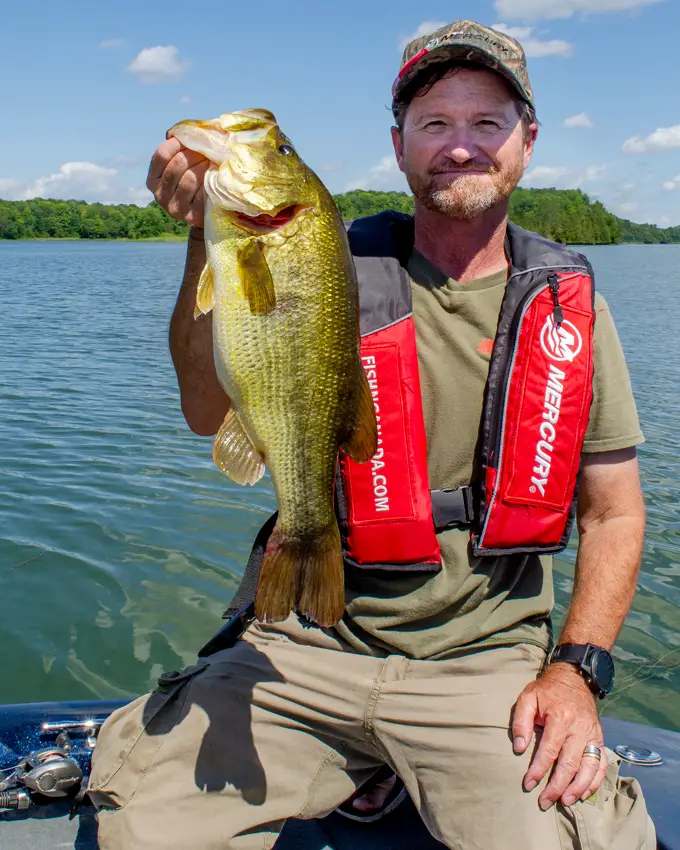
A Quick Trip to the Big Water
Before the day ended, Mike wanted to take me to the deep-water area to try for a Splake. Now, if you are thinking like I did on that day, you’re saying, “Splake in green water?”
Well, the water was a bit cleaner/clearer. However, it certainly wasn’t what I would call trout water. That said, Mike hovered the boat over another of his waypoints, and we started searching.
Mike is as good an angler as he is not only because of his practical skills on the water but in his ability to listen. I kept telling him about the increasing success that Ang and I have been having with Garmin’s LiveScope. Once I gave him a few stories about smashing Smallmouth with 100% of the success going to this technology, he said to me, “Tell me what to get.”
He immediately went out and bought a 9” EchoMap along with the LiveScope system and hasn’t looked back. He calls it money well spent!
Now I must point out that Mike already had two of Garmin’s competitor’s units on his boat, but he was that confident from my stories that he took the plunge.
With Mike’s newly discovered electronics, there is some reciprocation involved, and he is now sending me reports and telling me how it has changed his fishing. Essentially, we are now learning together. I love it!
“That Fish is Gonna Bite.”
As we entered Mike’s Splake area, he dropped the trolling motor in and turned on the fish finder. Within a minute, we saw the school of trout, and he dropped his little jig down to them. (He did this the previous week and quickly pounded two big Splake.)
We watched his jig on the LiveScope screen, and, within 30 seconds or so, a fish showed interest. Mike said, “Watch this. See the way it’s swimming? That fish is gonna bite.”
Well, bite it did.
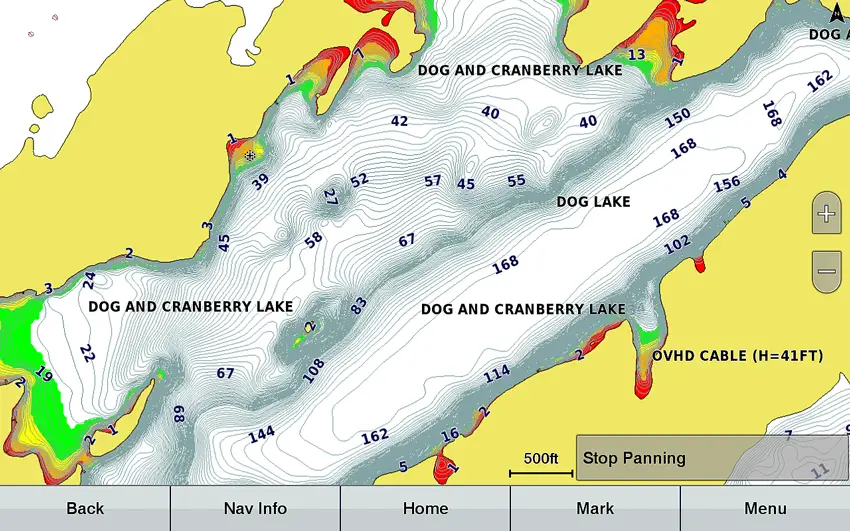
We were freaking out as he reeled it in. It was picture perfect; see it and catch it. The only downfall to all of this is… it was a Pike! We laughed so hard—a classic Petey and Mikey moment and ending to a fantastic fishing day.
In Conclusion
Taking someone’s word for something—especially in fishing—can be a tough thing to do. In this case, I trust Mike Burriss 100%. If he tells me a pattern, a bait suggestion, etc., I believe him. That said, for me to go out onto a new lake with that same green pea soup water colouring by myself, I would be a mental mess until I hooked up. That is if I hooked up!
Having Mike at the front of the boat and watching him reef into my favourite fish species gave me incentive and built my confidence level tremendously. Now I can take that day of experience fishing dirty water and transpose our techniques to any similar body of water I hit.
Definitely a successful fishing trip.
Now, it is a matter of you taking my word about how to fish murky, low-visibility water, heading out, and giving it a go yourself.
I do get it; it’s a tough one to follow through with, for sure.
Here are some tips:
- Fishing with a second person (or more) can be a huge help in turning a tough day into a successful one. By observing Mike and his low-visibility water technique, I quickly adapted.
- In low-vis water, I would suggest starting by using darker coloured plastics. I believe the dirty water makes the fish see things in more of a silhouette view (just my theory).
- In low-vis water, adding a rattle into a plastic bait can be a good idea for extra drawing power.
- If the area of low-visibility water you are fishing has a fair amount of fishing pressure, switch to a white or bright coloured bait. This can sometimes be the ticket. (Yes, this goes against my silhouette theory above, but it has worked for me in the past.) Fish often become familiar with things like colour. Don’t be afraid to change it up.
Hopefully this story kept you entertained, and the tips and content gave you a better understanding of how to approach a dirty/murky water fishing situation.
Thanks for reading,
Pete




